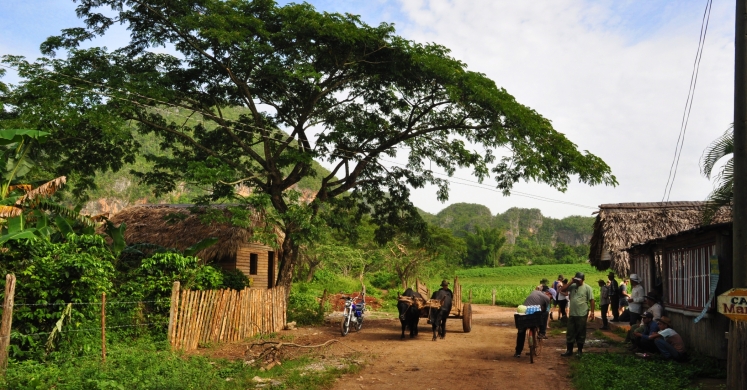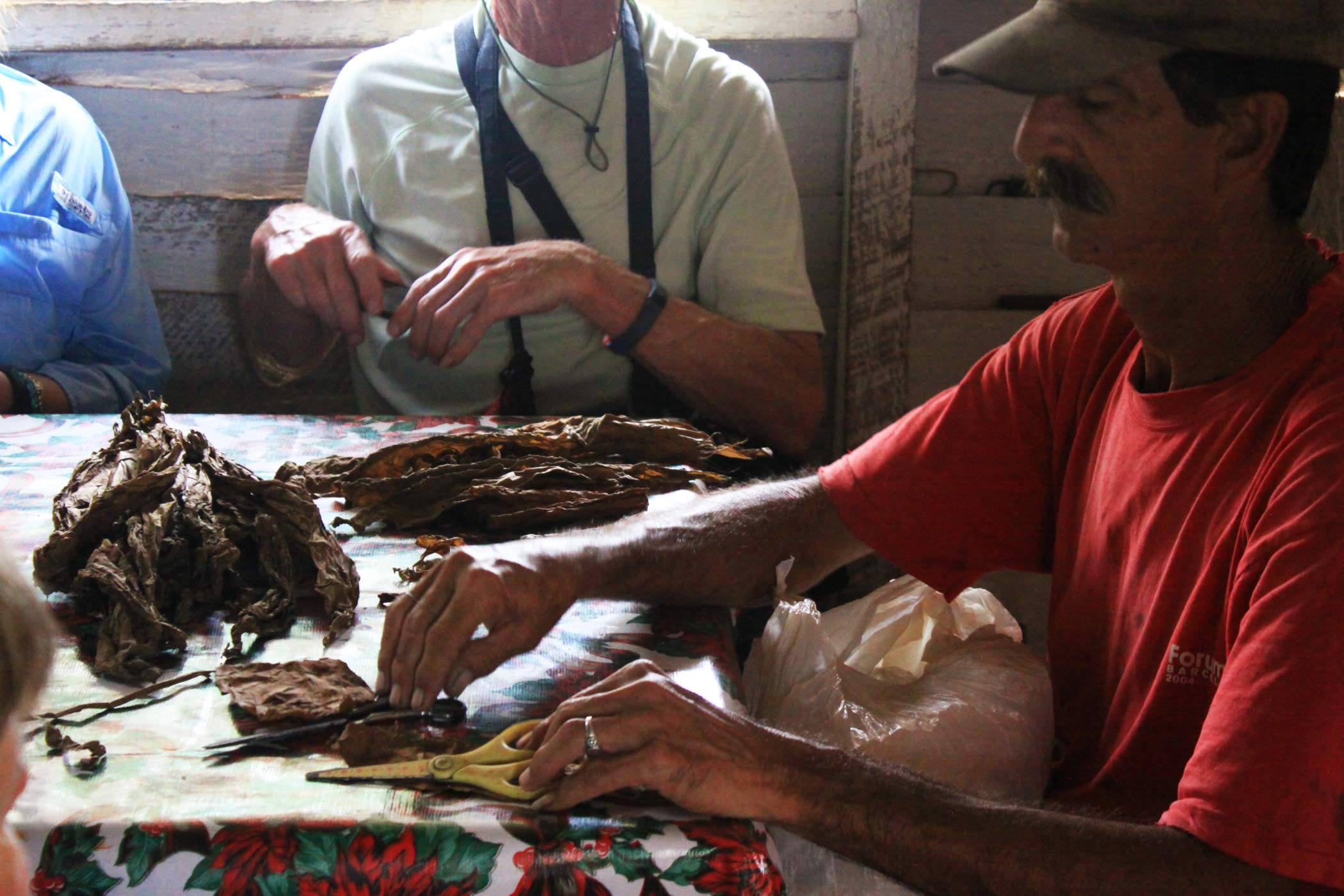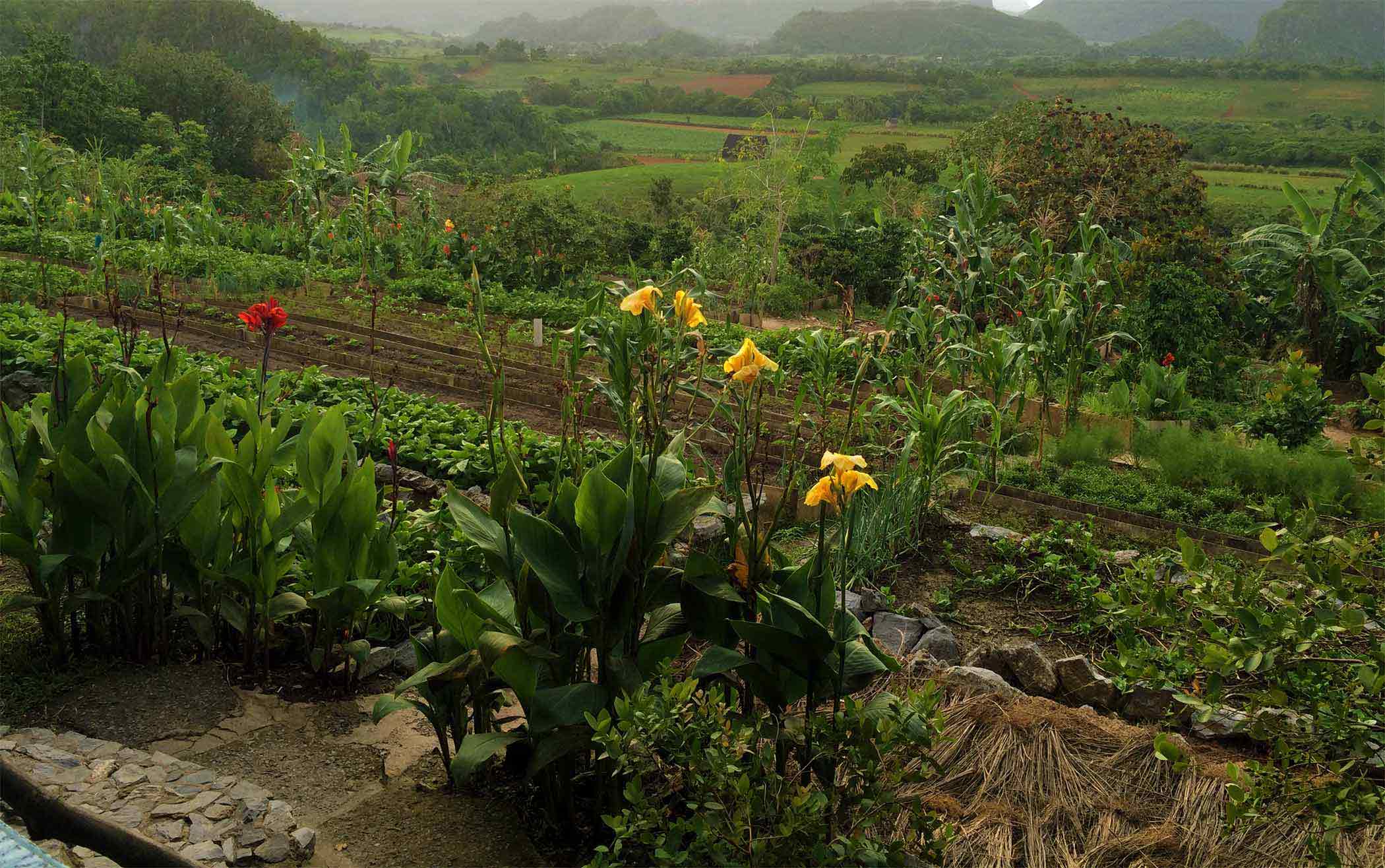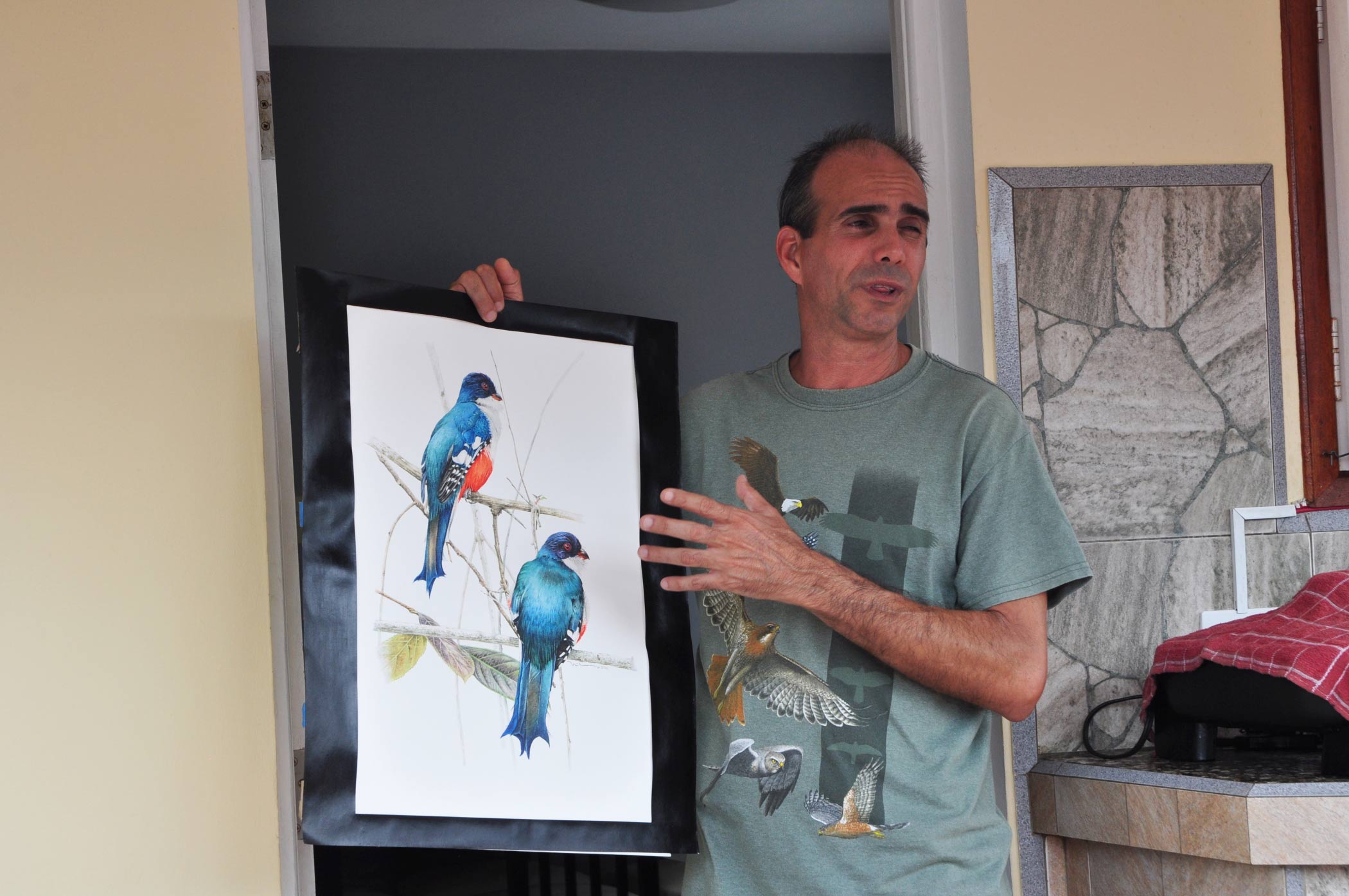Blog

Farming, Endemic Birds and Cigars in Cuba
As part of the three-year planning and design process behind our upcoming Tropical Forest exhibit, Dr. Emily Kalnicky and Jordyn Melino are traveling to Cuba to study first-hand the region’s biodiversity hotspots, natural resources and culture. Follow their adventures!
This morning started with a guided hike through Viñales National Park, a biodiverse area that is federally protected, with use of natural resources heavily monitored. For example, residents of the national park need to get permission from the Ministry of Forestry to cut down any trees, even on their own property. The hike started in town, walking to more rural areas and then through farmland, all with a background of the limestone mogotes ranges.

We stopped in at a tobacco farm and first went into a fermenting barn where two farmers were stacking bales of dried tobacco to sit and ferment. It was unbelievably hot inside the barn, to help with the fermentation process.

We then stopped in at the home of the cigar maker Jarardo, who is famous for his quality leaves and showed us the process of making a cigar. All of the leaves he was using came from his farm, and each of the local farms has a secret trick or ingredient in their cigars to make them unique. He boils a bit of honey, guava, and rum to make a tea, and adds this to the leaves (he uses milder tobacco leaves) to make a smooth cigar. The stem of the tobacco plant is not used in cigars, rather, it is used as an organic pesticide, as the majority of the nicotine is in the stem itself. There are three parts to a cigar-the filler, binder, and wrapper- and Jarardo is a true professional in crafting them. Our guide also mentioned that the limestone rock from the mogotes is crushed and also applied throughout the tobacco crops to kill slugs and keep other bugs away.

We then continued our walk through Viñales to check out some of the plant material. Growing here is a mix of Ficus, Quercus cubensis, Bombacopsus cubensis, and a few Rondeletia and Hamelia species. Of course, the landscape is dotted with quite a few Cuban royal palms as well. Our guide also pointed out a Ceiba tree with thorns on its trunk that locals jokingly refer to as the Mother-in-Law tree, as it is “difficult to hug.”

Our group next stopped at the home and studio of Nils Navarro, a wildlife artist and author of Endemic Birds of Cuba: A Comprehensive Field Guide, which featuring his original, scientifically accurate watercolor illustrations for each species. Previously he worked as a taxonomist for ten years at the Museum of Natural History, and he is now the project coordinator for the Caribbean Wildlife Art Working Group, which promotes bird conservation in the Caribbean region through art. He mentioned there are 27 endemic species of birds in Cuba, and his field guide is organized so that the illustrations of the 13 most common birds are on the front cover, and the 13 less common are on the back (the 27th species was identified after the publication of the guide).

Select photos © Paul g. Wiegman

